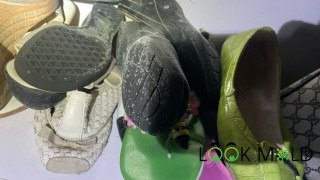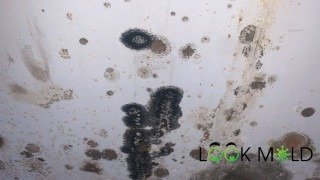Mold vs. Mildew: What’s the Difference?
Expert insight by: Brad Fishbein, Licensed Mold Assessor
Updated April 7, 2025
Black mold and mildew may look alike at first glance, but don’t be fooled — they’re two different fungi with very different risks. Knowing which one you’re dealing with is key, because how you clean and prevent them is completely different.
In this guide, you’ll learn the key differences between black mold vs. mildew, how to tell them apart, how to clean them safely, and when it’s time to call in a pro.
🧪 What You'll Learn
- What black mold and mildew actually are
- Key differences between the two
- Health risks (yes, one is much worse)
- How they grow and spread
- The right way to remove them
- How to prevent mold and mildew long term
- What mold and mildew smell like — and how to get rid of the odor
🦠 What Is Black Mold?
Black mold, scientifically known as Stachybotrys chartarum, is a type of toxic mold that thrives in dark, damp environments. Think of basements, attics, bathrooms — any place with chronic moisture and organic material like wood or drywall.
It appears black or dark green and can look slimy or like someone scribbled with a wax crayon. This mold doesn’t just sit on the surface — it grows deep into porous materials and can be hard to remove safely.
Learn more: What is black mold and why is it dangerous?
🧼 What Is Mildew?
Mildew is a surface-level fungus that often shows up in humid rooms like bathrooms and kitchens. It typically appears as a white or gray powdery film on tile, grout, or windowsills.
Unlike mold, mildew doesn’t penetrate materials deeply and is easier to clean with common household cleaners. It’s more of a nuisance than a health hazard — but that doesn’t mean it should be ignored.
🔍 Black Mold vs. Mildew: What’s the Difference?
| Feature | Black Mold | Mildew |
|---|---|---|
| Color | Black or dark green | White, gray, or light yellow |
| Texture | Slimy or fuzzy | Powdery or fluffy |
| Location | Inside walls, ceilings, crawlspaces | On surfaces like tile, windowsills |
| Depth | Penetrates porous materials | Stays on the surface |
| Health Risk | Can produce mycotoxins (toxic) | Mild irritant |
| Odor | Strong, musty, wet-earth smell | Mild musty odor |
🌱 How Mold and Mildew Grow
Both mold and mildew need moisture, warmth, and organic material to grow. But their growth behaviors are different.
Mold Growth:
- Releases airborne spores
- Feeds on organic materials like wood, drywall, and paper
- Grows deeply into porous materials
- Can appear within 24–48 hours after water damage
Mildew Growth:
- Stays on surfaces
- Appears as a white film
- Common on tile, glass, metal, and other non-porous surfaces
📸 Example:
⚠️ Health Risks of Black Mold vs. Mildew
🧬 Black Mold Health Effects
Black mold can produce mycotoxins that may cause:
- Headaches
- Fatigue
- Asthma attacks
- Skin and eye irritation
- Memory loss
- Chronic sinus infections
- Respiratory issues
Some people develop mold allergies with severe symptoms, especially if they’re exposed over time.
⚠️ Prolonged exposure to black mold has been linked to neurological symptoms in extreme cases.
🤧 Mildew Health Effects
Mildew doesn't release mycotoxins, but it can still:
- Irritate your lungs
- Trigger allergy symptoms
- Worsen asthma in sensitive individuals
Mildew is annoying — but black mold is dangerous.
🧽 How to Remove Mold and Mildew
Mildew Removal (DIY Safe)
- Use a mold/mildew-specific cleaner or vinegar solution (1 part vinegar to 3 parts water)
- Apply to surface and scrub with a stiff brush
- Rinse and dry thoroughly
Black Mold Removal (Use Caution!)
If the affected area is:
- Under 10 square feet: You can attempt DIY with full PPE (N95 mask, gloves, goggles)
- Over 10 square feet or in walls/HVAC: Call a licensed remediation professional
EPA says DIY is only safe under 10 sq. ft. — anything larger should be professionally treated.
Source: EPA Mold Cleanup Guide
🛠️ Cleaning Tools & Products
| Method | Best For | Notes |
|---|---|---|
| Vinegar | Mildew on hard surfaces | Natural, effective, non-toxic |
| Borax | Mold on walls | Inhibits regrowth |
| Mold cleaner | Showers, grout | Always follow label directions |
| Bleach (sparingly) | Tile, grout | Avoid on porous surfaces (can worsen issue) |
🚫 Don’t Just Kill It — Remove It
Dead mold can still be harmful. Mold spores become airborne when dry and can spread fast. Always clean with PPE and address the source of moisture or it will come back.
🧠 Reminder: If it’s on drywall or insulation — it must be removed, not just cleaned.
🛑 Preventing Mold and Mildew
✅ Prevention Checklist
- Use dehumidifiers in humid areas
- Ensure bathroom exhaust fans work and vent outside
- Fix leaks promptly
- Keep indoor humidity below 60%
- Clean tile and grout regularly
- Insulate cold surfaces to reduce condensation
👃 What Do Mold and Mildew Smell Like?
Mold Smell:
- Strong, musty
- Like wet soil, rotting leaves, or dirty laundry
- Caused by MVOCs (microbial volatile organic compounds)
Mildew Smell:
- Lighter, musty odor
- Often smells like stale water or a mild wet towel
👃 If your home smells musty, there’s a good chance mold is hiding behind the walls or under the floorboards.
🌬️ How to Get Rid of the Smell
- Remove the mold or mildew completely
- Clean affected surfaces and porous materials
- Run HEPA filters and air purifiers
- Ventilate the area and dry it thoroughly
Check out our guide to the Top 5 Air Purifiers for Mold
✅ Bottom Line: Mold vs. Mildew
Both mold and mildew are fungi — but they’re not equally dangerous.
| Fungi | Risk Level | Removal Difficulty |
|---|---|---|
| Mildew | Low | Easy (DIY) |
| Black Mold | High | Difficult (Professional) |
If it’s black, slimy, growing on drywall or wood — call a pro.
If it’s white and powdery on tile — you may be able to handle it safely.
❓ Frequently Asked Questions About Mold vs. Mildew
What is the difference between mold and mildew?
Mold penetrates surfaces and can cause health problems, while mildew grows on surfaces and is usually less harmful.
How do I know if it’s mold or mildew?
Mold is often black or green and slimy. Mildew is white or gray and powdery. Mold has a stronger odor and is more invasive.
Is black mold dangerous?
Yes, black mold (Stachybotrys chartarum) produces mycotoxins that can cause respiratory and neurological symptoms with long-term exposure.
Can I clean mildew myself?
Yes. Mildew is usually safe to clean with vinegar or mold cleaners. Just make sure to ventilate the area and dry it completely afterward.
Do I need a professional for black mold?
If the moldy area is larger than 10 square feet, or it's growing inside walls or your HVAC system, the EPA recommends hiring a licensed mold remediation expert.
🧯 Your Next Step
If you think you have black mold — don’t guess.
👉 Start with a professional mold inspection to identify the species and determine if you need remediation.
The sooner you act, the safer your home (and health) will be.
Explore Related Topics:

Meet the author: Brad Fishbein is an ACAC council-certified Microbial Investigator. In the fall of 2012, he became a Licensed Mold Assessor in the State of Florida through the Department of Business & Professional Regulation. Brad has helped homeowners with over 5,000 successfully completed Mold Inspections since 2009.



